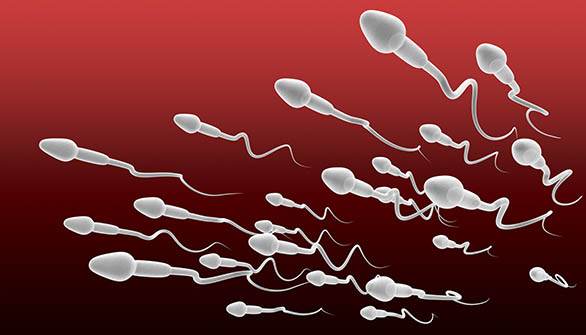Intrauterine insemination is an ART technique in the treatment of infertility in which the washed and concentrated sperm are placed inside a woman’s uterus with the help of a catheter. It is used in a variety of infertility causes such as mild male infertility, unexplained infertility, mild endometriosis, cervical factor infertility, ejaculatory disorders, vaginismus, etc.
The IUI success rate even in the best centers in the world varies from 5 to 20% only. The reasons for these low rates can be many. IUI’s success depends on several factors such as:
• Selection of patients
• female age
• IUI indication
• Type of medications used for ovarian stimulation.
• Type of monitoring
• Semen preparation technique and
• Technique of the IUI itself.
1) female age
The most important determinant is the age of the female. Many studies have shown a sharp decrease in the IUI success rate beyond the female age of 35. It may be due to poor ovarian reserve, oocyte quality, and reproductive aging. Increased male age may also be associated with decreased semen volume, sperm motility, and sperm morphology. This can have an additive effect when the female age is also over 35 years. Therefore, the partner should ideally be recommended <35 years of age and the duration of infertility <8-10 years.
2) IUI indication –
This is an important determinant of success in IUI. Among various indications, the success rate has been higher between PCOS or ovulatory dysfunction and mild male infertility. Endometriosis has a poor success rate and is one of the most difficult conditions to successfully treat. The best results were obtained in cervical indications: mucosal hostility or stenosis.
A. Indications for treatment: male factor infertility
In cases of male factor infertility, the best results are obtained when the total motile sperm count in the insemination sample exceeds a threshold of approximately 10 million and 14% or more of sperm morphology (WHO standard strict criteria iii) Higher counts do not further increase the success rate. And the IUI is rarely successful if there are less than 1 million counts. The studies show a direct relationship between the number of sperm (in the initial analysis or in the catheter) and the pregnancy rate.
B. Indications for treatment: unexplained infertility
Ovarian stimulation followed by IUI is an effective treatment for couples in whom infertility is
unexplained In practice, IUI together with ovarian stimulation is generally considered superior to
sexual intercourse programmed in stimulated cycles with a higher pregnancy rate.

- Type of stimulation:
There are several methods to stimulate the ovary in IUI, with the aim of increasing the number of oocytes (ovules) available for fertilization and increasing the chances of conception.
Commonly used drugs to stimulate the ovaries are clomiphene and letrozole. Clomiphene was generally the first to be used. Today, many prefer letrozole over clomiphene. In addition to these oral medications, certain injectable hormones can also be used. The fertility specialist may also choose to combine oral medications with injectables or the latter can be used alone, as appropriate. In general, it was observed that the addition of injectables, where necessary, increased the
IUI chances of success. - Monitoring the cycle and synchronization of the HCG activator:
Monitoring the cycle with transvaginal ultrasound improves the chances of success. It also helps decide the timing of the trigger. The optimal size of the follicle, the state of the uterine lining called the endometrium, can be better visualized. It is good practice for the IUI physician to perform monitoring scans to better understand the progression of the stimulated cycle. Likewise, not monitoring the cycle and not doing the scans yourself can contribute to suboptimal cycle monitoring, and therefore a failure. - Insemination time:
It is a very important factor and insemination should ideally be done after 35-36 hours of activation. Yes
possible, the rupture of the eggs should be seen before the IUI.
6.Cum collection
The sample must be collected using aseptic technique in a sterile bottle. Ideally, semen collection should
be done on hospital premises. Semen preparation must be performed in the appropriate andrology laboratory. Sperm
the preparation lab must be in the same configuration where the IUI will be performed. This is a very important factor.
which often determines the success of IUI.
- Preparation of semen:
The IUI should be done with the washed semen sample. Using unwashed or unprocessed semen can lead to abdominal pain, infection, and even fainting spells. The purpose of sperm preparation is to concentrate normal mobile sperm with intact functional and genetic properties, including normal morphology and minimal DNA damage, and to separate unwanted seminal plasma with anti-fertilization content. Different types of sperm washing techniques can be applied, although none has been shown to be superior to the other. In general, laboratories that do IUI are only using the “swimming” technique, and laboratories that handle both IUI and IVF are using the “density gradient” technique. This has more to do with ease and is not a difficult and fast role. - Factors related to the IUI procedure itself:
Special precautions should be taken while performing the IUI to improve the pregnancy rate, for example, the couple should be treated for any type of infection, the IUI can be done under the guidance of use, especially in difficult cases. Simple steps like optimal filling of the bladder can make a considerable difference in technique. Of course, a prolonged traumatic procedure should be avoided. Washed sample to be placed slowly into the uterus. Minimal management of the cervix should be encouraged. Cervical mucus can be cleaned. The use of a soft or hard catheter does not make a difference in the pregnancy rate, as long as the procedure is atraumatic and smooth. Prolonged bed rest immediately after the procedure is no longer recommended. The luteal phase should be supported with progesterone in case gonadotropins are used for ovarian stimulation.


Add Your Comment